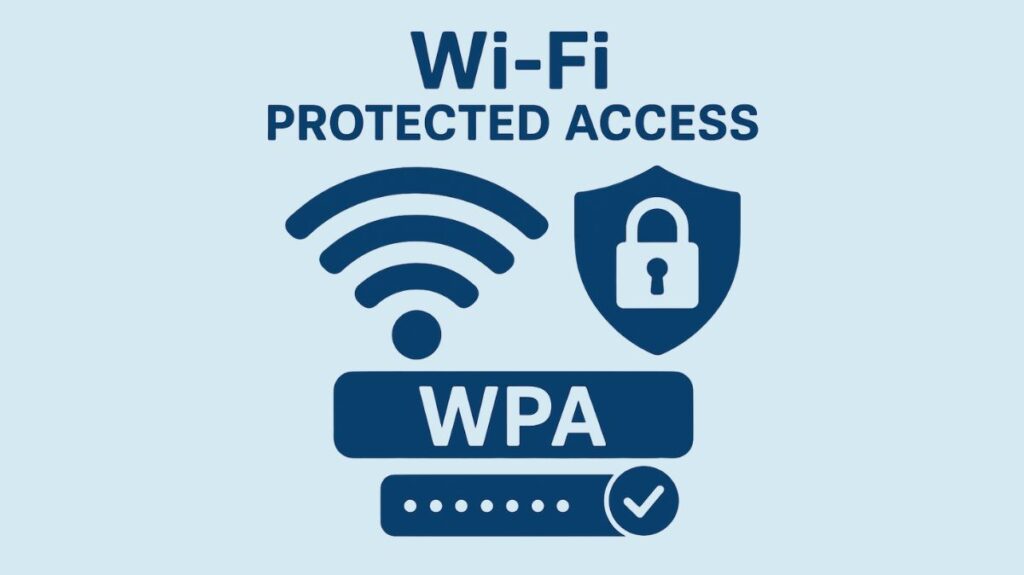Wi Fi Protected Access definition

The Wi-Fi Alliance created the Wi-Fi Protected Access (WPA) security standard for wireless networks. It was first released in 2003 as a temporary solution to replace the outdated and weak Wired Equivalent Privacy (WEP) standard while WPA2, a more reliable standard, was being developed using the complete IEEE 802.11i specification.
By delivering stronger encryption and better authentication than WEP, WPA was intended to increase security.
Features of WPA
WPA was developed to work with outdated wireless technology that was made for WEP; frequently, it just requires firmware updates. The two main areas of improvement were data integrity and encryption:
- Temporal Key Integrity Protocol (TKIP)
The Temporal Key Integrity Protocol (TKIP) is the primary encryption mechanism used by the original WPA protocol, often known as WPA version 1 or the TKIP standard.
- Dynamic Keys: Because TKIP dynamically creates a distinct, 128-bit key for every data packet, it is far more difficult for attackers to crack than WEP’s static key.
- Per-Packet Key Mixing: This method generates a distinct key for every frame by combining the base encryption key, the transmitter’s MAC address, and a sizable Initialization Vector (IV).
- Underlying Cypher: TKIP still employs the same RC4 technique as WEP, despite using dynamic keying. This is because TKIP was designed to be backward compatible. Unlike WEP, which uses 64-bit or 128-bit keys, WPA uses 256-bit keys.
- Authentication and Integrity
WPA put in place systems to confirm users and make sure data wasn’t altered.
- Message Integrity Check (MIC): Known colloquially as “Michael,” WPA has a Message Integrity Check (MIC) built in to stop hackers from intercepting, changing, and resending data packets. The ineffective Cyclic Redundancy Check (CRC) of WEP was replaced by this method. An Access Point (AP) will disconnect all stations and block traffic for 60 seconds if it detects two MIC failures in 60 seconds.
- WPA implemented the Extensible Authentication Protocol (EAP) in order to strengthen user authentication.
Also Read About What Is LDP Protocol? Label Distribution Protocol In MPLS
WPA Modes of Operation
For key distribution and authentication, WPA offers two main mechanisms that are appropriate for various contexts:
| Mode | Target Environment | Authentication Mechanism | Key Management |
|---|---|---|---|
| WPA-Personal (WPA-PSK) | Home and Small Office Networks | Uses a Pre-Shared Key (PSK), typically a passphrase of 8 to 63 printable ASCII characters. | Clients and the AP use a four-way handshake to securely generate unique, temporary session encryption keys from the PSK without transmitting the PSK itself over the air. |
| WPA-Enterprise | Large Organizations and Corporations | Uses the 802.1X standard combined with the Extensible Authentication Protocol (EAP). | Authentication requires a dedicated Remote Authentication Dial-In User Service (RADIUS) server. Unique encryption keys are assigned to each session. |
Status and Obsolescence
Despite being a significant improvement over WEP, WPA is currently seen as antiquated, obsolete, and less secure than its successors.
Replacement: WPA2 (based on the approved IEEE 802.11i standard) and subsequently WPA3 formally replaced WPA. WPA2 replaces TKIP/RC4 encryption with the far more robust AES-CCMP.
Vulnerabilities: Over time, flaws in WPA were found since TKIP kept some of the fundamental components of WEP. Researchers can conduct attacks that can decrypt content delivered to a client and inject arbitrary packets into the network by taking advantage of specific vulnerabilities in WPA-TKIP.
Important Security Concerns: If a weak password or passphrase is used, WPA-Personal is still susceptible to password cracking attempts since an attacker can intercept the four-way handshake and try an offline dictionary or brute-force attacks. Furthermore, WPA and WPA2 do not have forward secrecy, which means that all passively recorded wireless traffic (past and future) encrypted with that key may be decrypted if the PSK is found.
Performance: In general, WPA-TKIP-configured networks are unable to reach throughput rates higher than 54 Mbps.
It is highly advised that any existing Wi-Fi network switch from WPA to WPA2 or WPA3 for the best security.
Also Read About How Does Address Resolution Protocol Work And ARP Table
